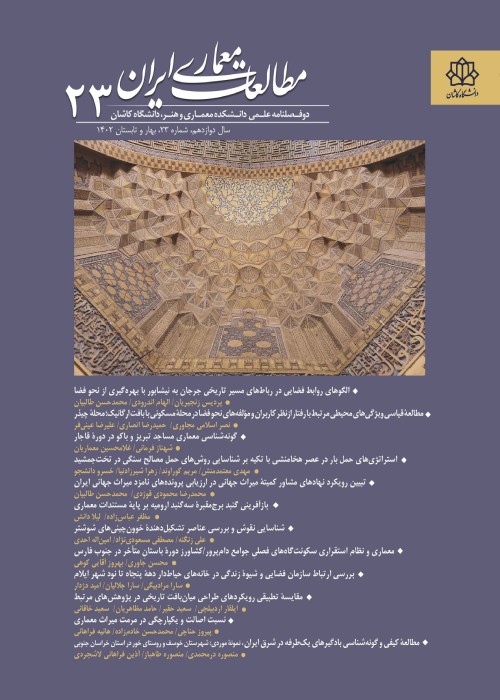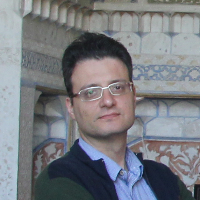Historical Monitoring for Authenticity Assessment of Architectural Decorations in Seyyed Rokn ad-Din Madrasa according to the Principles of World Heritage Preservation
Author(s):
Article Type:
Research/Original Article (دارای رتبه معتبر)
Abstract:
After the inscription of the historical city of Yazd on the world heritage list in 2017, more emphasis was put on the preservation of historical monuments within its urban structure. Simultaneously, more effort was made to carry out different types of monitoring to protect the authenticity of historical monuments. This study, using a qualitative and interpretative approach, researches the role of historical monitoring as a method to assess the authenticity of the architectural revetments of Seyyed Rokn ad-Din Madrasa (or Rukniyya), which is one of the most important monuments of this city. The history of interventions based on the principles of world heritage preservation as well as the history of deteriorating factors that altered the building is documented in this research. For this, after defining the concept of historical monitoring, this paper documents the damages, repairs, and interventions that occurred in the Rukniyya. Content analysis of these documents was carried out to identify the risk critical points and finally to draw the timeline of the restorations of the architectural revetments to assess their authenticity. According to these documents, significant damages in the Rukniyya include cracks, structural damages caused by the digging of wells in the periphery of the building and the subsequent moisture, and termite activity inside the building. Outside, the destruction of the main arch of the iwan, structural interventions, and the falling of dome tiles due to natural conditions specifically on its western side are among the major damages. The damaging factors should be considered in terms of activity levels in future conservation plans. For the purpose of authenticity assessment, the findings of the investigation differentiate authentic parts from later alterations in this building. The inner shell of the dome, the end wall of the iwan, and the tile inscription on the dome stem are materially authentic and date from the Muzaffarid period. The motifs and material components of the iwan and its facade as well as the tiles on the outer shell of the dome are interventions of the past fifty years. These parts were reconstructed based on the architectural style of the fourteenth century, imitating the tilework patterns in the Shahab ad-Din Qassem Madrasa, Shamsiyyeh Madrasa, and the Jame‘ Mosque of Yazd. The purpose of such interventions was to preserve the physical and functional features of the building and improve its legibility. Although the reconstructed and renovated parts are interesting in terms of restoration works, they do not have historical or archeological value and cannot be referenced as Muzaffarid-style artwork. The findings of the study show that two separate conservation plans are required for each of these two parts of the building providing clear and transparent decisions.
Keywords:
Language:
Persian
Published:
Journal of Iranian Architecture Studies, Volume:11 Issue: 21, 2022
Pages:
5 to 30
magiran.com/p2527412
دانلود و مطالعه متن این مقاله با یکی از روشهای زیر امکان پذیر است:
اشتراک شخصی
با عضویت و پرداخت آنلاین حق اشتراک یکساله به مبلغ 1,390,000ريال میتوانید 70 عنوان مطلب دانلود کنید!
اشتراک سازمانی
به کتابخانه دانشگاه یا محل کار خود پیشنهاد کنید تا اشتراک سازمانی این پایگاه را برای دسترسی نامحدود همه کاربران به متن مطالب تهیه نمایند!
توجه!
- حق عضویت دریافتی صرف حمایت از نشریات عضو و نگهداری، تکمیل و توسعه مگیران میشود.
- پرداخت حق اشتراک و دانلود مقالات اجازه بازنشر آن در سایر رسانههای چاپی و دیجیتال را به کاربر نمیدهد.
In order to view content subscription is required
Personal subscription
Subscribe magiran.com for 70 € euros via PayPal and download 70 articles during a year.
Organization subscription
Please contact us to subscribe your university or library for unlimited access!



